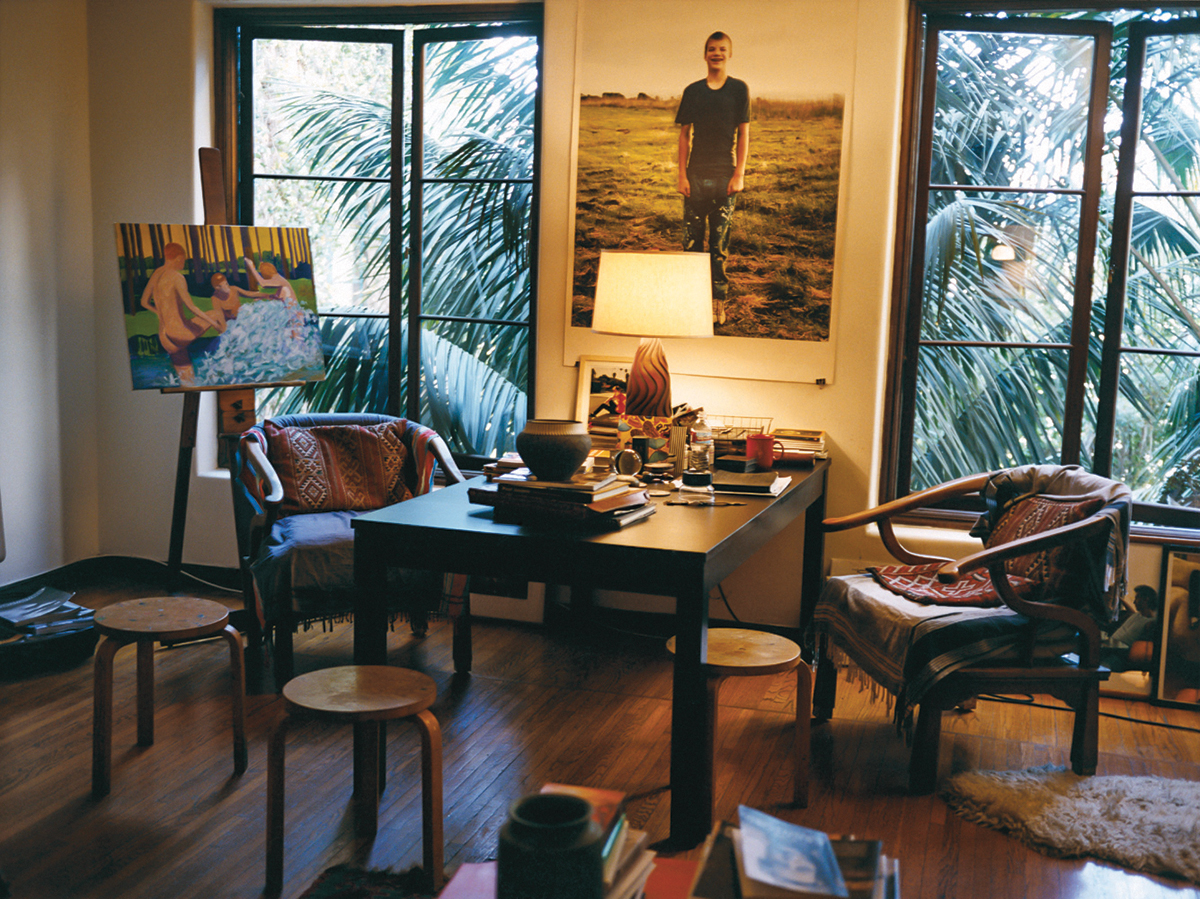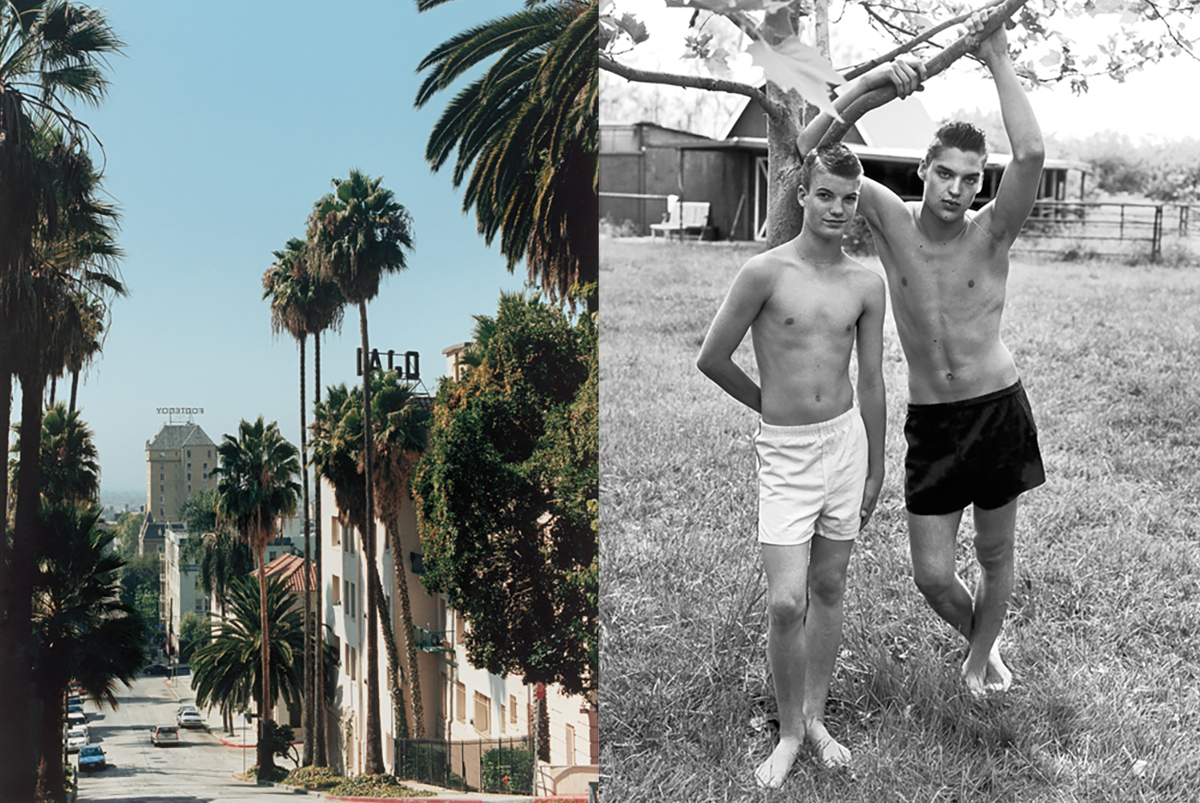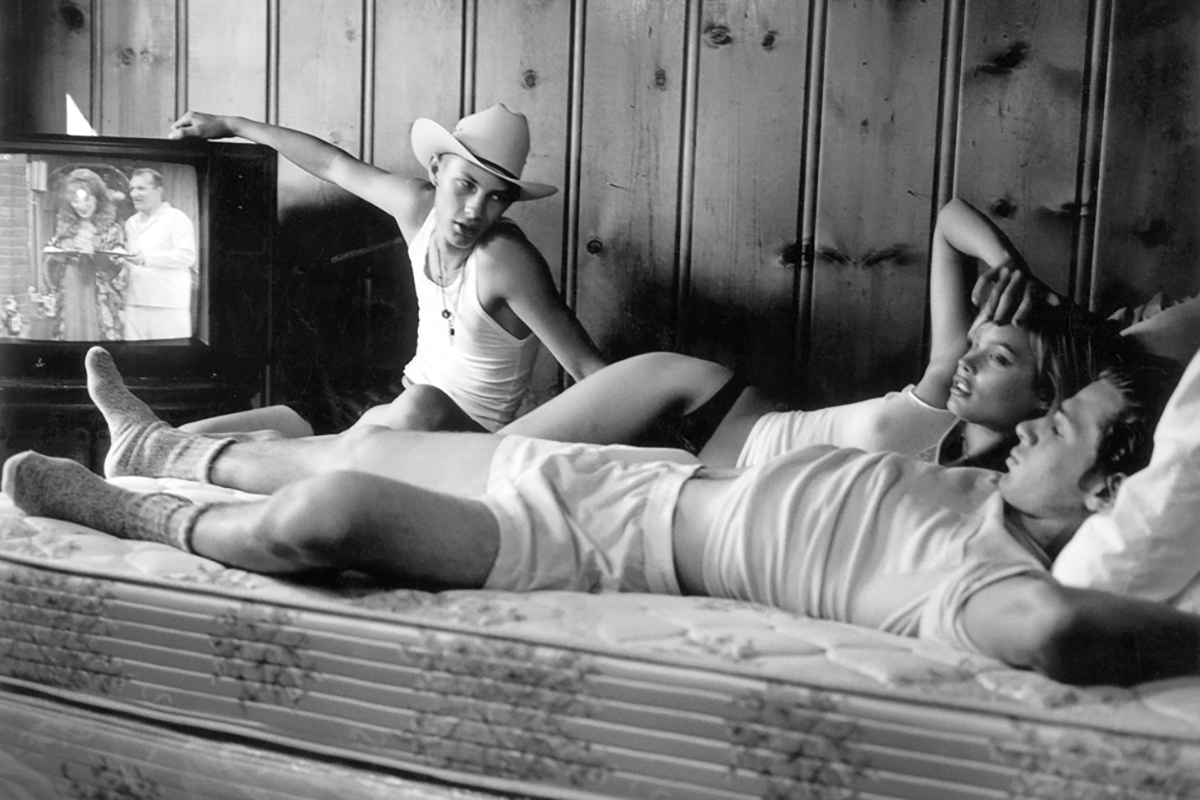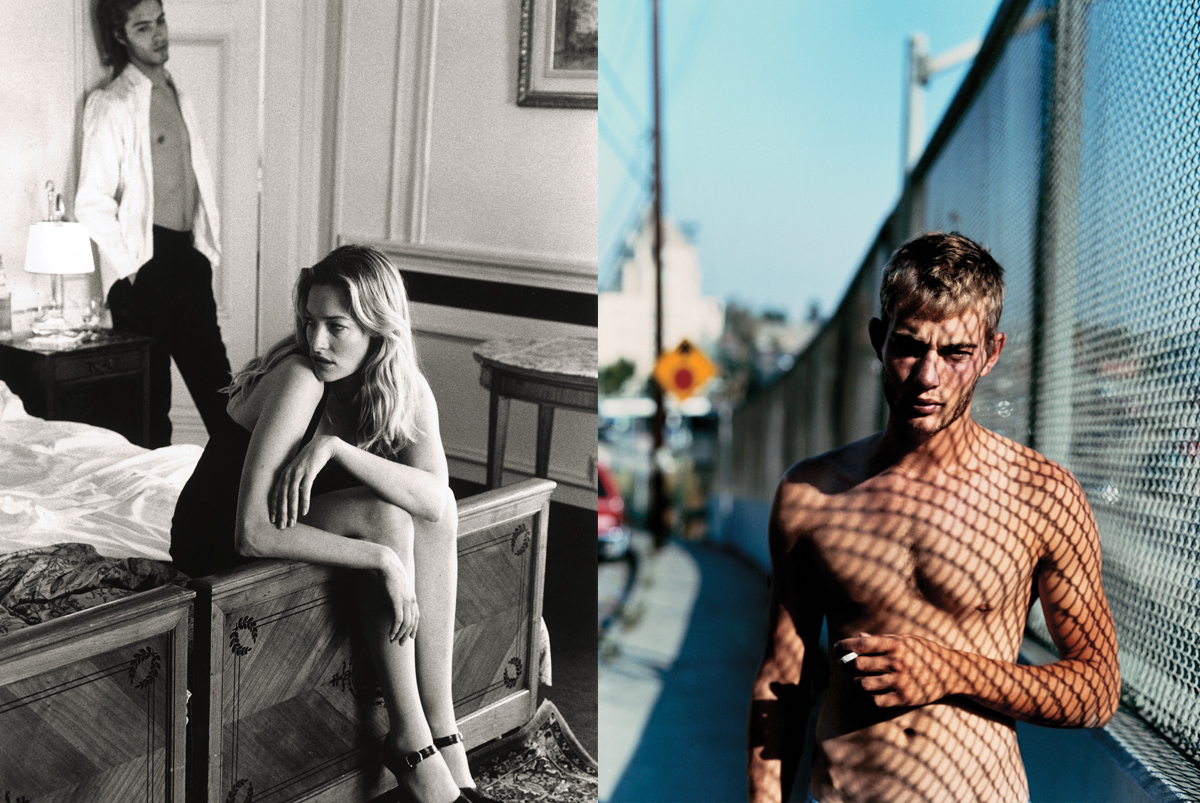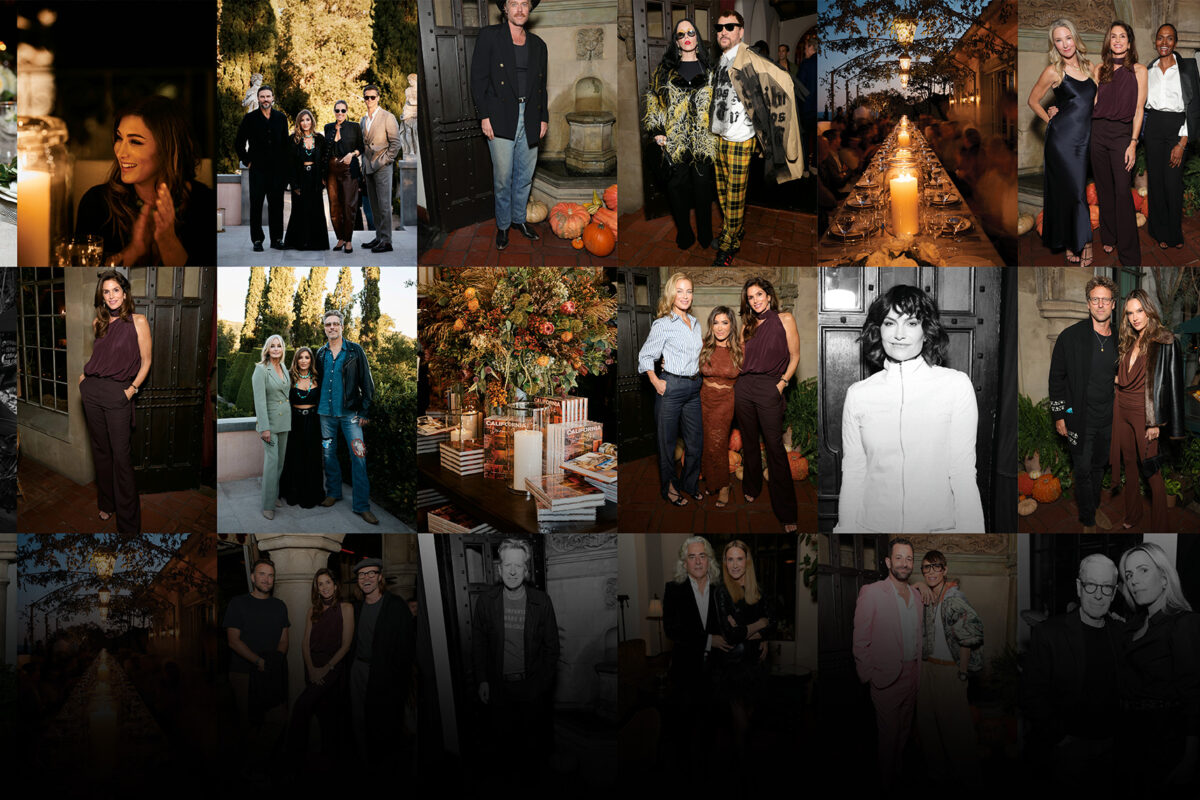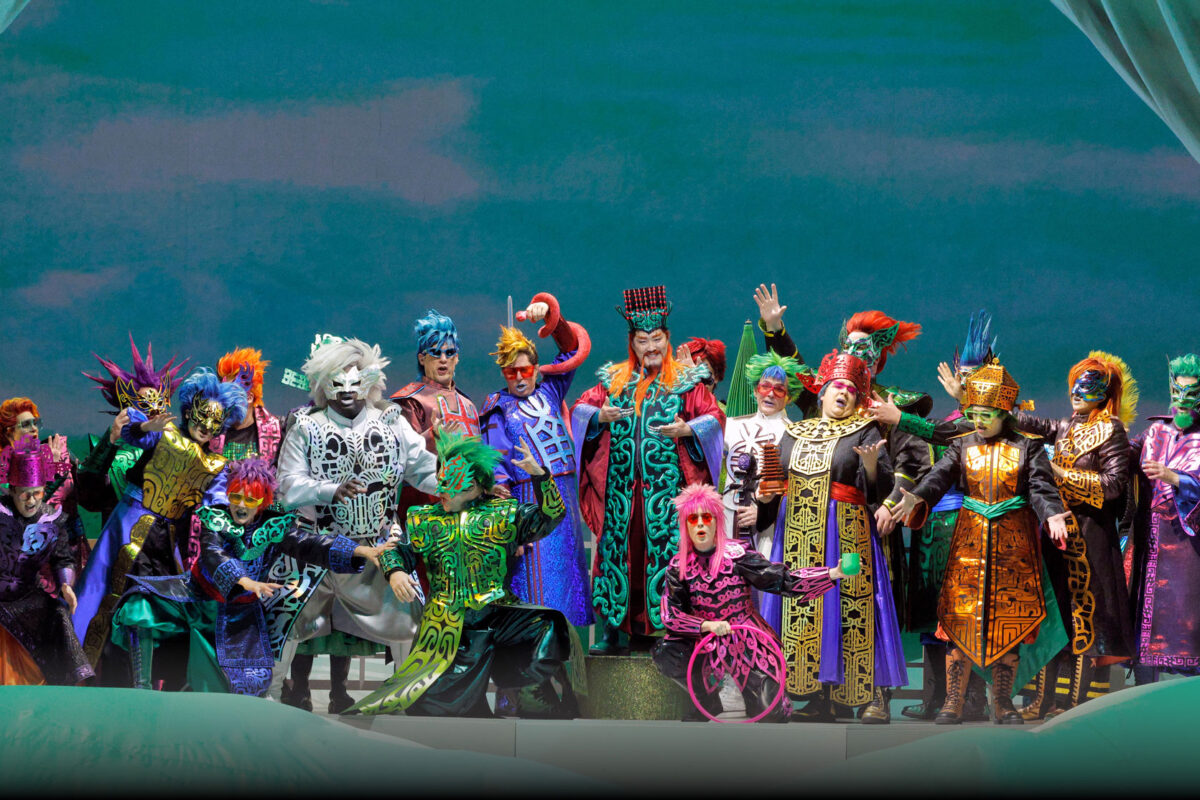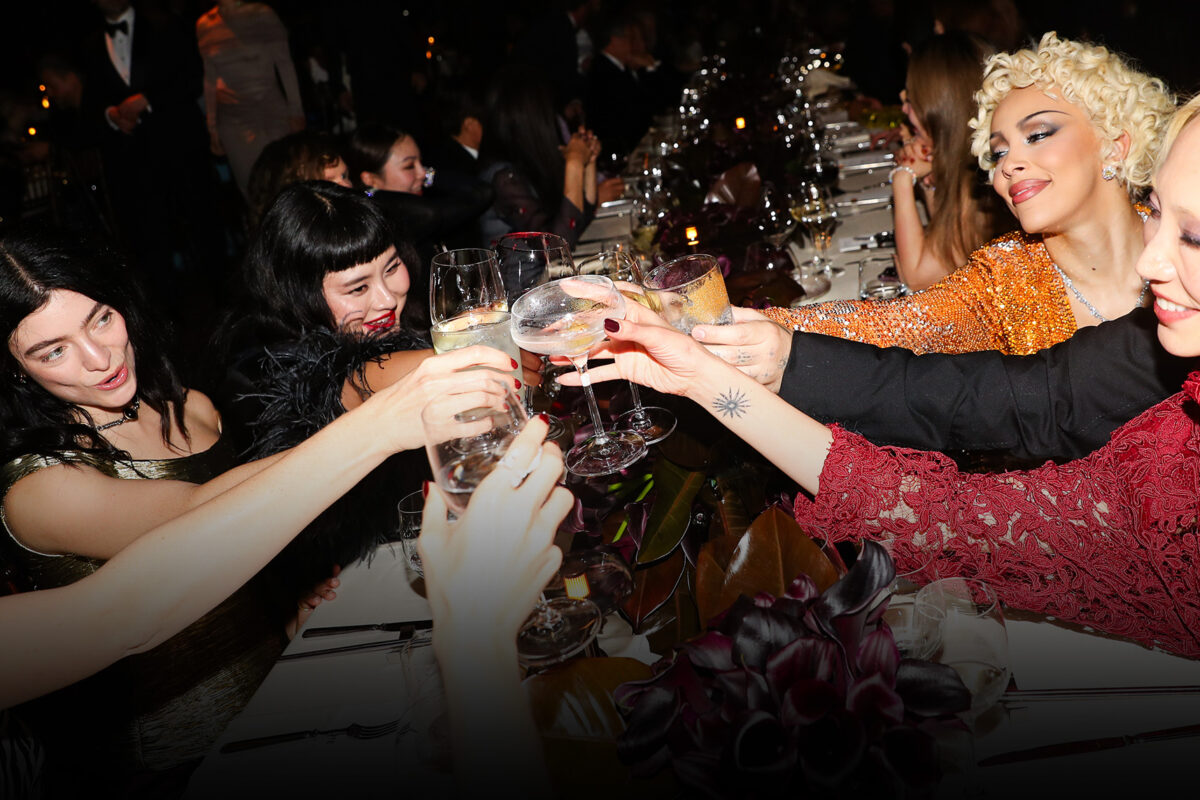Photographer Paul Jasmin’s decades spent documenting L.A.’s drifters have made him a star in his own right
Words by DAVID HOCHMAN
Paul Jasmin was watching Mutiny on the Bounty again recently. “I think it could have been my 500th time, because I’m always looking at those damned Turner Classics,” he tells me. Curled under a library table nearby was Jasmin’s cat, Jack. “My steadfast companion in these uncertain times,” says Jasmin, whose friends call him Jazz. The two of them — Jazz and Jack the Cat, living together like Old Hollywood bachelors in their RKO Pictures-era complex on Wilshire Boulevard in Los Angeles — make “a magnificent pair,” according to Jasmin. “I’m OK with Jack’s antisocial behavior, and Jack doesn’t judge my movie infatuations.”
Photographer PAUL JASMIN’s ’20s-era abode, part of the historic Los Altos Apartments. Photo by Paul Jasmin.
After 50 years photographing gallery-worthy dreamscapes around L.A., and a short spell as a successful New York fashion illustrator and Warhol acolyte, Jasmin has every right to Spartacus and chill. Between teaching photography at ArtCenter College of Design in Pasadena (Sofia Coppola was his student) and surfacing with iconic images of his own (he got his start shooting the stills for American Gigolo), Jasmin built a following as glam as the covers he shot for Harper’s Bazaar and Vogue. Anjelica Huston, Richard Gere, Liza Minnelli, Judy Garland — they all turned to Jasmin for gossip and titillation.
Ben and Josh, Ojai, CA, 2000. Whitley Avenue, Los Angeles, CA, 1999. Photos by Paul Jasmin.
I was on my way to see him when the COVID-19 virus first unleashed its insidious barbed droplets upon the people of Southern California. His manager thought a phone call would be safer than a sit-down, given his age (Jasmin is a youthful 85) and his propensity for animated chatter. But he was actually out shopping at Ralph’s when I tried calling. “They said they weren’t delivering, so I went to stock up on crackers and flowers and all those good things,” he tells me. Millions were panicking, but Jasmin sounded quite buoyant. “Being in quarantine in L.A. isn’t particularly unsettling for me, to be honest. It’s not like New York. You can isolate yourself here and never feel like you’re missing anything. It’s one of the things I love most about this city.”
Clint, Charlotte and Oliver, Big Bear, CA, 1998. Photo by Paul Jasmin.
It helped that Jasmin has a stellar lockdown situation. The Los Altos Apartments where he lives were built in the 1920s as a Mission Revival-style haven for stars like Clara Bow, Mae West and Douglas Fairbanks. “It was kind of a tryst pad for William Randolph Hearst and Marion Davies, because he was married at the time, and they needed a place to crash,” Jasmin says. He loves that the building is not “phony L.A.” Phony is a word that comes up frequently with him. It’s almost a kind of trigger word that propels him. “I wanted all the pictures I ever took to look like the embracing pictures of Elizabeth Taylor and Montgomery Clift from A Place in the Sun,” he tells me at one point. “To me that was realism. Theirs were the least phony embraces of all.”
“I’m definitely a bit of a starf**cker. None of these newer stars ring my gong”
PAUL JASMIN
A collection of Jasmin’s most indelible images — raw, raucous and definitely un-phony — will be exhibited this fall by appointment only at Fahey/Klein Gallery from Sept. 24 through Dec. 31, in celebration of Jasmin’s 50 years among L.A.’s heartbreaking romantics. Remarkably, it’s his first solo show in this city. Topless starlets in repose. A Velveeta-yellow Porsche creeping up an incline off Sunset. Rippled young Adonises who could be cowboys if they weren’t stretched out on stripped Hollywood motel beds. “Lost Angeles” radiates with nostalgia for a city that never really existed and yet is somehow as true to L.A. as a midnight stroll down La Brea.
Tatjana and Mike, Paris, 1995. Clarence, Los Angeles, 2003. Photos by Paul Jasmin.
“Jazz embodies a [time in] Los Angeles when there was still a Schwab’s, when the Chateau was full of grifters and drifters, and prostitutes were everywhere along Sunset Boulevard,” says Lisa Love, the former West Coast editor at Vogue and Jasmin’s friend of more than 30 years. “It’s a romantic notion of a worn and sticky side of L.A. life. It’s not Beverly Hills. It’s the Los Angeles with the lone palm tree bending behind chain-link over a vacant concrete pool.”
Jasmin describes his work to me as “stark reality with just a hint of glamour.” As a painter, an illustrator, a photographer, an arts teacher and a consummate bon vivant (“I’m definitely a little bit of a starfucker,” he admits; he’s on a home-phone basis with Sofia Coppola, Richard Gere and Bruce Weber), Jasmin brings to life a slice of vintage Los Angeles that’s drop-dead magnetic and yet completely unvarnished. Imagine Gloria Swanson hanging with the pool hall hustlers and whores of a Tom Waits ballad.
Harmon and Cameron, Malibu, 2016. Photo by Paul Jasmin.
“I think of all the parties I’ve been to at Jazz’s, and how that remarkable vibe spills over into his photography and reflects his life,” says Weber, who met Jasmin in New York back in the ’70s and first urged Jasmin to pick up a camera. “His circle of interest encompasses an incredible mix of people from every dimension. You’d see babies and people in their late 90s and surfers and young actors and students who adore him and somebody you recognized from a magazine, and Jazz somehow helps everyone feel at ease and at home.”
Photographer Dewey Nicks, another former student, says, “What makes Paul a great photographer is what makes him a great teacher and an interesting force in general. It’s this giant embrace of his surroundings. He never stops shooting, never stops engaging, never stops collecting people and ideas.”
Valeria, Lancaster, 2008. Photo by Paul Jasmin.
Jasmin almost could have turned out ordinary. Born and raised in Helena, Mont. — “a typical small western town with only one movie theater,” as he put it — he lived with his head in big-sky clouds and his mind on glitzier capitals. He saved money by dressing windows at the local department store and decamped to Paris as soon as he could afford the steamer passage. A “Paul Bowlesian adventure across North Africa” followed, then he eventually made his way to L.A. The glam life suited the dashing flaneur who charmed his way around town. Anthony Perkins liked him so much he got Hitchcock to make him the voice of Norman Bates’ mother in Psycho. Later, during a short stint in New York, Jasmin was a “walker” for Judy Garland. “She didn’t have money in the end,” he explained. “So, she lived out of her MGM wardrobe trunks, and we got very good at playing a high-class version of ‘dine and dash’ at places like The Plaza and The St. Regis.”
The lensman outside his home in Central L.A. Photo by Dirk Kikstra.
As hunker-down spring turned into quar summer, I checked back with Jasmin, who remained nearly unchanged by the most tumultuous times in recent memory. His gallery show is still scheduled to debut; he and Jack the Cat remain a noble match, and he’s gradually weaned himself off cable news and “updates from our nincompoop-in-chief.” He’s reading a biography of Stalin’s daughter, enjoying un-phony views from his apartment, and spending more time than he should on those Turner Classics.
“What can I say? I have a rich fantasy life,” he says. “Marlon Brando. Jimmy Dean. Kirk Douglas. None of these newer stars exactly ring my gong, you know? I’m perfectly happy with the space and time to reflect on what was. A lot of people are going crazy right now being stuck at home. Not me. I always knew I was fucked up, so I’m kind of enjoying it.”
Feature image: Photographer PAUL JASMIN at home in Los Angeles. Photo by Dirk Kikstra.
This story originally appeared in the September 2020 issue of C Magazine.
Discover more CULTURE news.


